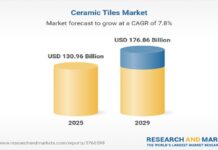Construction companies could miss out on valuable incentives aimed at promoting innovation due to a shake-up in the research and development (R&D) tax credits scheme. The purpose of R&D tax credits is to encourage investment in R&D, driving growth and innovation. Businesses can claim a refund of part of their R&D costs through reduced corporation tax bills. However, concerns have arisen regarding some companies abusing the system or committing fraud to claim undeserved tax credits, resulting in significant costs to the Treasury.
In response to these issues, HMRC is implementing changes to strengthen the system. Starting from August 1st, all tax credit claims must be submitted digitally through an HMRC portal and signed by a named company director. Additionally, companies new to the scheme must pre-notify HMRC before making their first claim, and the scheme will be limited to R&D conducted within the UK, excluding overseas R&D claims.
While there are positive aspects, such as the inclusion of emerging technologies like data analytics and cloud computing, some experts worry that the increased administrative burden and fear of investigations might discourage companies from claiming R&D tax credits. Construction companies, in particular, may be affected as they are considered to be under-claiming in this area. Many construction businesses fail to identify where R&D is happening within their operations, resulting in partial or missed claims.
R&D in construction covers technological advances to overcome obstacles or uncertainty, including innovative materials and processes. Companies need to demonstrate scientific or technological uncertainty, an advance in addressing that uncertainty, and the systemic nature of the solution. There are two tax credit schemes available: SME R&D relief for smaller businesses and the R&D expenditure credit (RDEC) scheme for larger companies. Both schemes can be lucrative, with the average claim ranging from £57,000 to £633,000.
To maximize successful claims, companies need to maintain detailed records of project-related activities and payments. Engaging a specialist consultant can be beneficial in navigating the complexities of the process, identifying eligible claims, and dealing with HMRC inquiries. However, companies should choose consultants wisely, considering their experience with similar businesses and the fees they charge, which typically range from 15% to 25% of the credit secured. Cheaper consultants may provide limited support and template forms. Overall, construction companies need to be proactive in understanding and embracing innovation to benefit from R&D tax credits fully.




























